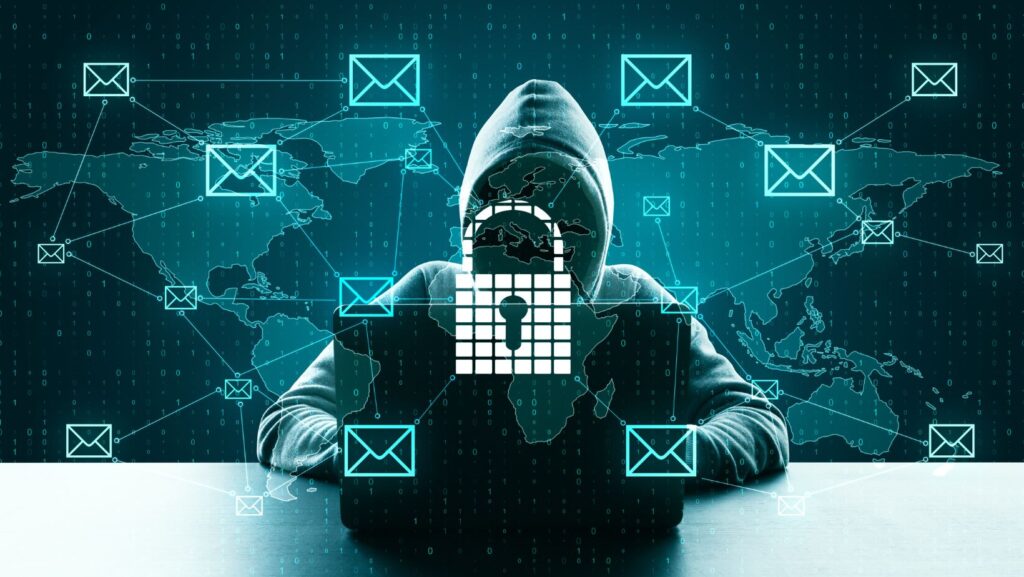In today’s increasingly digital world, businesses face a growing number of cybersecurity threats, and among the most damaging is ransomware. Ransomware attacks have become more sophisticated, targeted, and frequent, leaving businesses of all sizes vulnerable to data breaches, financial losses, and reputational damage. However, there is a silver lining—ransomware protection strategies can help shield businesses from these devastating cyber threats. This article will explore how ransomware protection can save your business, focusing on the importance of preparedness, prevention, and timely response.
The Growing Threat of Ransomware
Ransomware is malicious software designed to encrypt a user’s files or lock them out of their system, demanding a ransom in exchange for restoring access. These attacks can cause significant disruption, often bringing daily business operations to a halt. The rise of targeted ransomware campaigns means that no business is too small or too large to be a potential target. Industries ranging from healthcare and education to finance and manufacturing have all suffered from the crippling effects of ransomware attacks.
According to a 2023 report by Cybersecurity Ventures, ransomware attacks are expected to cost businesses around $20 billion globally by 2025. This highlights the severity of the threat. As businesses become more digitally connected, the avenues through which ransomware can penetrate systems expand, making robust ransomware protection more crucial than ever.
Why Ransomware Protection is Essential for Your Business
Ransomware protection isn’t just about having the latest antivirus software; it’s about creating a comprehensive defense strategy that includes both preventative measures and the ability to respond swiftly in case an attack occurs. Here are some key reasons why ransomware protection is essential for your business:
- Minimizing Financial Losses
The financial costs of a ransomware attack can be overwhelming. Apart from the ransom itself, businesses often incur additional costs related to recovery, data loss, operational downtime, and reputational damage. According to the 2022 Sophos State of Ransomware Report, the average ransom payment was approximately $170,000, with recovery costs surpassing $1.4 million. By investing in ransomware protection, businesses can avoid these significant financial burdens. - Protecting Critical Data
Data is often referred to as the lifeblood of a business. Losing access to critical information—whether customer data, financial records, or intellectual property—can have catastrophic consequences. Ransomware protection ensures that your data is regularly backed up, encrypted, and secure from malicious threats, preventing loss or unauthorized access. - Safeguarding Brand Reputation
A ransomware attack can severely damage a company’s reputation. Customers and clients expect their personal and financial information to be protected, and a security breach can undermine trust. Businesses that fail to protect their data risk losing customers, partners, and market credibility. Effective ransomware protection minimizes the chances of such a breach and helps maintain consumer confidence. - Ensuring Compliance
Many industries are bound by strict data protection and privacy regulations, such as GDPR in Europe or HIPAA in the United States. A ransomware attack can put your business at risk of non-compliance, leading to hefty fines and legal consequences. Ransomware protection strategies help ensure that your company remains compliant with industry-specific regulations.
Key Ransomware Protection Measures for Businesses
Effective ransomware protection involves a multi-layered approach to cybersecurity. While no system can be entirely immune to attacks, businesses can significantly reduce their risk by implementing the following protective measures:
1. Regular Data Backups
One of the most effective ways to protect against ransomware is to ensure that your data is regularly backed up. If a ransomware attack encrypts your files, having a recent backup allows you to restore your systems without paying the ransom. Backups should be kept in a separate, secure location, such as an offsite server or cloud storage, and should be tested periodically to ensure they are working properly.
2. Employee Training and Awareness
Human error is often the weakest link in cybersecurity. Phishing emails, one of the most common methods for delivering ransomware, can easily deceive employees into downloading malicious attachments or clicking on harmful links. Regular training can help employees recognize suspicious emails and avoid falling victim to these types of attacks. A culture of security awareness is vital for keeping ransomware at bay.
3. Endpoint Security
Endpoint security solutions are essential for protecting devices—such as computers, smartphones, and servers—from ransomware attacks. These tools can detect and block malicious activities, such as the installation of ransomware on an endpoint, before they can do significant damage. Regularly updating your endpoint security software ensures that you are protected against the latest threats.
4. Network Segmentation
Network segmentation involves dividing your network into smaller, isolated segments. This makes it more difficult for ransomware to spread across your entire system if one segment becomes infected. By limiting access to sensitive data and systems to only authorized users, businesses can reduce the impact of a potential attack and prevent it from affecting the entire network.
5. Use of Strong Passwords and Multi-Factor Authentication (MFA)
Weak passwords are a common vulnerability exploited by cybercriminals. Ensuring that all user accounts have strong, unique passwords can prevent unauthorized access to your systems. Additionally, enabling multi-factor authentication (MFA) adds an extra layer of protection, making it more difficult for attackers to gain access to critical systems even if they manage to compromise a password.
6. Patch Management
Cybercriminals often exploit vulnerabilities in software to launch ransomware attacks. These vulnerabilities can be patched through regular software updates. Implementing a robust patch management policy ensures that all systems and applications are up to date with the latest security patches, minimizing the risk of an attack.
How to Respond to a Ransomware Attack

Despite best efforts, businesses may still fall victim to a ransomware attack. Having a clear and well-rehearsed incident response plan can help mitigate the damage and restore normal operations as quickly as possible. The following steps are essential in responding to a ransomware attack:
- Isolate Infected Systems
Quickly disconnect infected systems from the network to prevent the ransomware from spreading to other devices. - Assess the Situation
Determine which systems and data have been affected, and consult with cybersecurity experts to understand the nature of the attack. - Report the Incident
Notify relevant authorities, such as law enforcement and any applicable regulatory bodies. Reporting the attack can help with investigations and mitigate legal consequences. - Restore Data from Backups
If you have secure, recent backups, begin the process of restoring your systems and data from these backups. - Do Not Pay the Ransom
Law enforcement agencies generally advise against paying the ransom, as there is no guarantee that the attackers will release your data. Paying the ransom only funds further criminal activities. - Review and Strengthen Security
After recovery, review your security measures to identify vulnerabilities that may have been exploited during the attack. Strengthening your defenses can help prevent future attacks.
Conclusion
Ransomware attacks pose a significant threat to businesses, but by implementing robust ransomware protection strategies, you can minimize your risk and protect your business from financial loss, reputational damage, and legal consequences. Prevention, preparedness, and prompt response are key to safeguarding your organization from this growing cyber threat. As cybercriminals continue to evolve their tactics, businesses must remain vigilant and proactive in their approach to cybersecurity to stay one step ahead of the attackers. With the right protection in place, your business can mitigate the impact of ransomware and continue operating securely in today’s digital landscape.

